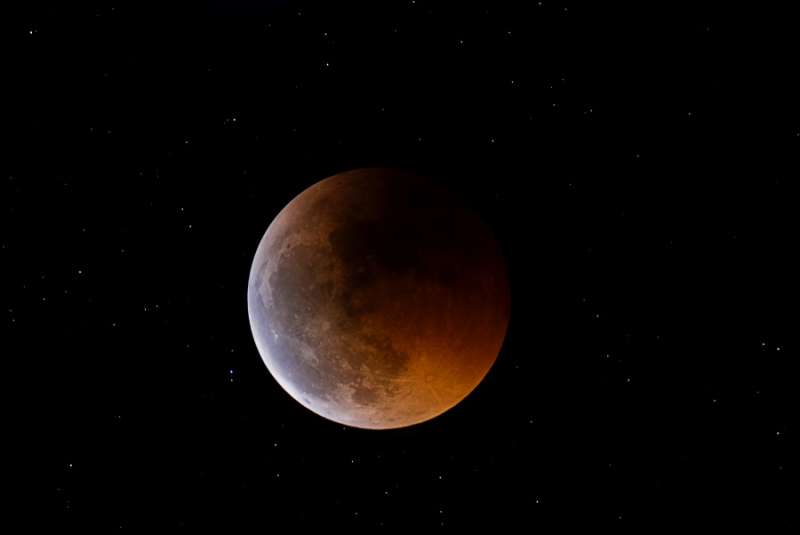Credit & Copyright: Javier Algarra
Explanation:
A celestial prelude to
today's solstice,
the June 15
total lunar eclipse
was one of the longest in recent years.
It was also one of the darkest, but not completely dark.
Even during totality, a somber, red lunar disk could be seen in
the starry night sky, reflecting
reddened light falling on to its surface.
Seen from a
lunar perspective,
the ruddy illumination is from all the sunsets and sunrises
around the edges of a
silhouetted Earth.
In this sharp portrait of the eclipsed Moon from Granada, Spain,
the Moon's edge reflects a
bluish tinge
as well as it emerges from Earth's
umbral shadow.
The bluer light is still filtered through Earth's atmosphere, but
originates in rays of sunlight passing through layers high in
the upper stratosphere.
That light is colored
by ozone that absorbs red light and transmits bluer hues.
1999 2000 2001 2002 2003 2004 2005 2006 2007 2008 2009 2010 2011 2012 2013 2014 2015 2016 2017 2018 2019 2020 2021 2022 2023 2024 2025 |
Январь Февраль Март Апрель Май Июнь Июль Август Сентябрь Октябрь Ноябрь Декабрь |
NASA Web Site Statements, Warnings, and Disclaimers
NASA Official: Jay Norris. Specific rights apply.
A service of: LHEA at NASA / GSFC
& Michigan Tech. U.
|
Публикации с ключевыми словами:
total lunar eclipse - solstice - полное затмение - лунное затмение - летнее солнцестояние
Публикации со словами: total lunar eclipse - solstice - полное затмение - лунное затмение - летнее солнцестояние | |
См. также:
Все публикации на ту же тему >> | |
